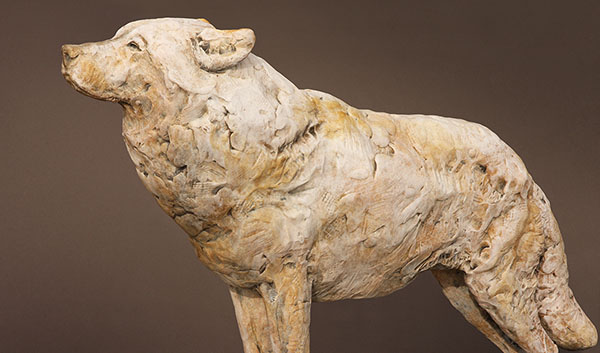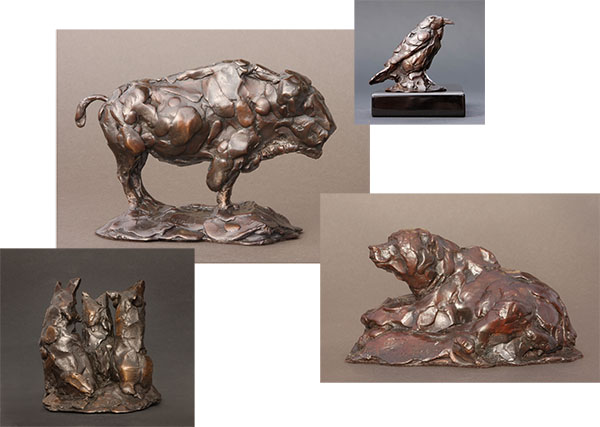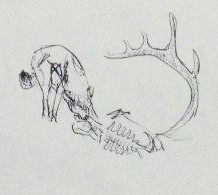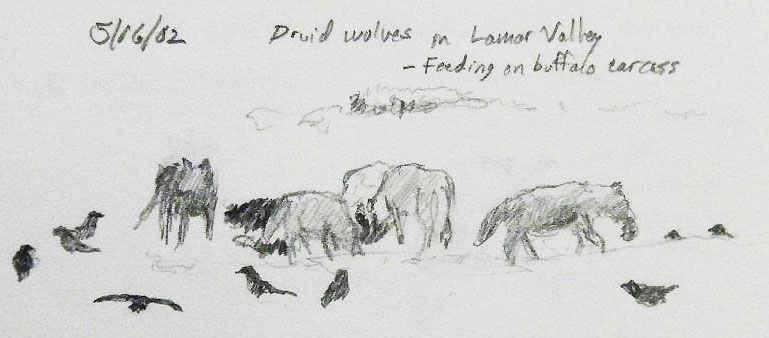 This time of year in Yellowstone, the margin between life and death is thin. Rarely are the relationships between animals and the landscape more evident than in late winter, when the contrast between hunter and hunted, between survival and… not, is stark. We have much to witness, and a great deal to learn.
This time of year in Yellowstone, the margin between life and death is thin. Rarely are the relationships between animals and the landscape more evident than in late winter, when the contrast between hunter and hunted, between survival and… not, is stark. We have much to witness, and a great deal to learn.

Field sketches & measurements of a bull elk carcass (2 days post-mortem).

Field sketch of bison carcass 10 days after death (from February 11, 2007)
Observe a carcass scene and you begin to realize the complex interactions at play. The hierarchy at a carcass is well understood by those in attendance, played out between dominant and submissive, aged and youthful, resident and itinerant. Among coyotes, the ‘boss’ displays a fierce open-mouthed “alligator- gape” posture to all competitors. Yet, it is the coyote that sits on the periphery until the wolves are finished eating. Ravens show their high rank by strutting with head feathers raised and fluffy flanks. Nothing is random; the actions of wild creatures – and humans – have both causes and consequences.
The first grizzly bear of the year comes in for his share – and everyone steps aside… One gesture by a singe animal can change the entire dynamic of the carcass scene; similarly, the actions of we humans have a ripple effect on the environment. My job as an artist is to divine truths about the natural world as a way to find our place within it. Hence, I become a student of nuances in animal behavior in order to convey an emotional landscape, and connect the human world to the animal world.

Clockwise from top-left: “The Matriarch” – cow bison, “Active Mind” – common raven, “Seat of Power” – bedded grizzly bear and “Lamar Valley Jazz” – coyote trio (the latter edition is sold out)

Wolf pup feeding on bull elk carcass

Sketch from life of the Druid Wolf Pack in Lamar Valley feeding on a bison carcass on 5/16/02.
“The White Lady,” (pictured at top) to me is not simply a wolf, or a bronze, but a visual expression of something universal, the weight of her responsibilities as an alpha perhaps, an animal to whom a carcass represents the margin between life and death for her pack. “The Matriarch” (shown in upper left of sculpture montage) represents the passing of wisdom between generations; a lifetime of knowledge that guides the survival of the herd on their quest to avoid becoming carcasses themselves.
For the reader: It is seldom that one can observe a carcass at close range here in Yellowstone Park. Kills often happen away from the roads, and unlike other places such as in Africa, the presence of the observer would disrupt the entire dynamic of the animal interactions. As a result, distance viewing through a spotting scope is a must and only after the predators and scavengers have had their fill, i.e. consumed every bit of digestible, and even some non-digestible, matter can the artist or curious Park visitor safely and ethically go in and see what is left. FYI, an adult elk killed by wolves will largely be consumed in one day, and almost entirely by the second day, bison, being much larger, can last a week or more.
